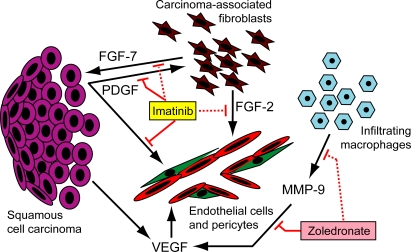Figure 7. Schematic Model of the Angiogenic Circuitry Operative during Malignant Progression in the Cervical Transformation Zone of HPV/E2 Mice.
The transformed epithelial cells (purple) secrete VEGF, which becomes sequestered in the matrix until released by the action of MMP-9, produced by infiltrating macrophages (blue); the bioavailable VEGF then acts directly on endothelial cells (red) to stimulate angiogenesis. PDGF ligands are predominantly produced by the squamous epithelium and stimulate production of FGF-2 and FGF-7 by carcinoma-associated fibroblasts (brown) that express PDGF-receptors. FGF-2 stimulates angiogenesis by direct action on endothelial cells, and PDGF further promotes the angiogenic process by inducing pericyte (green) recruitment and association with newly formed blood vessels. FGF-7 may signal to the cervical carcinoma cells. Imatinib acts by inhibiting PDGF ligand-dependent PDGF receptor signaling (solid red lines), thereby repressing the production of FGF-2 and FGF-7 by carcinoma-associated fibroblasts (dotted red lines) and additionally reducing the pericyte coverage on tumor blood vessels. The clinically approved bisphosphonate zoledronate (zoledronic acid, Zometa, ZA) has been shown to suppress the expression of MMP-9 by macrophages (dotted red line), as well as to directly inhibit the proteolytic action of MMP-9 (solid red line).

